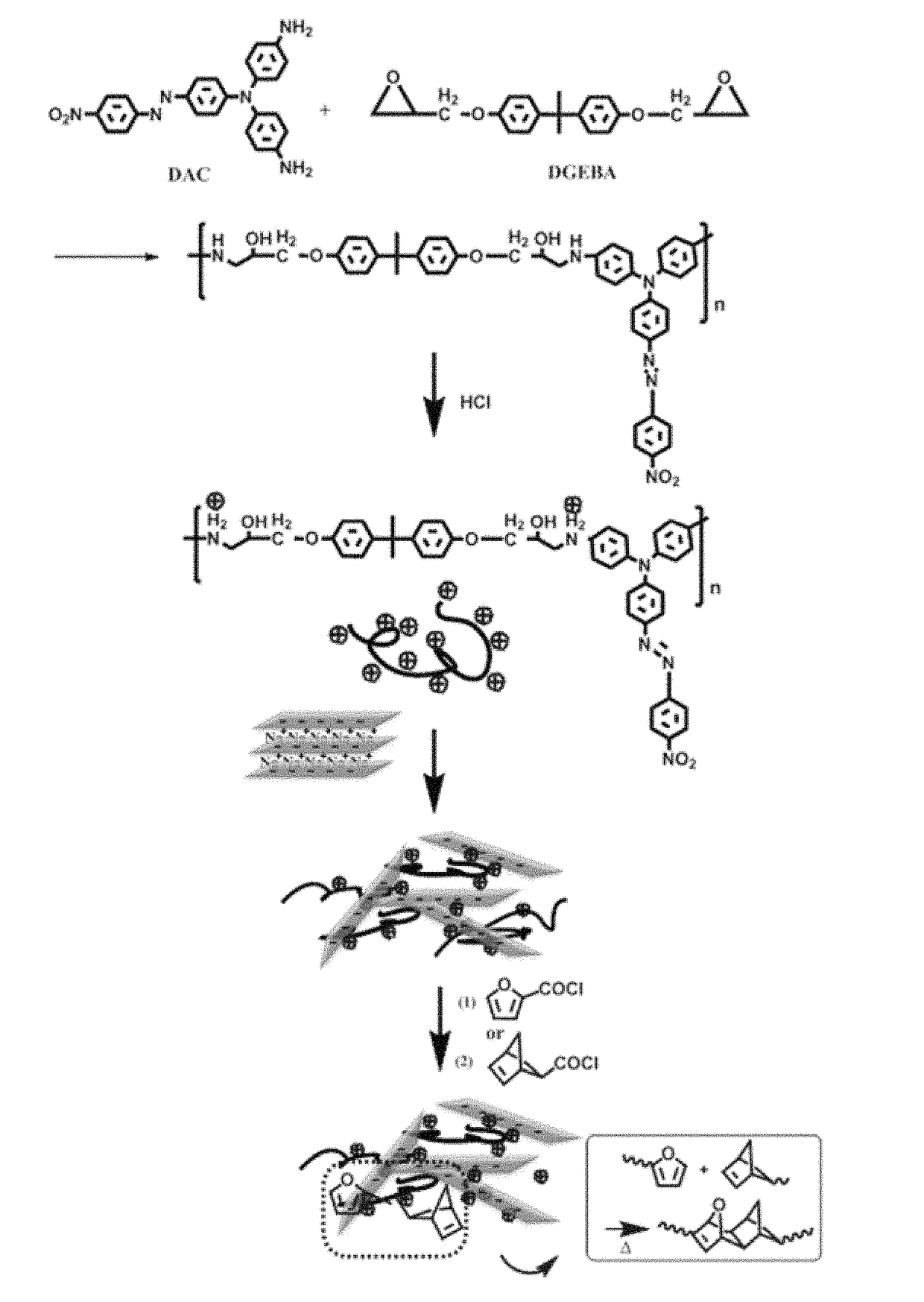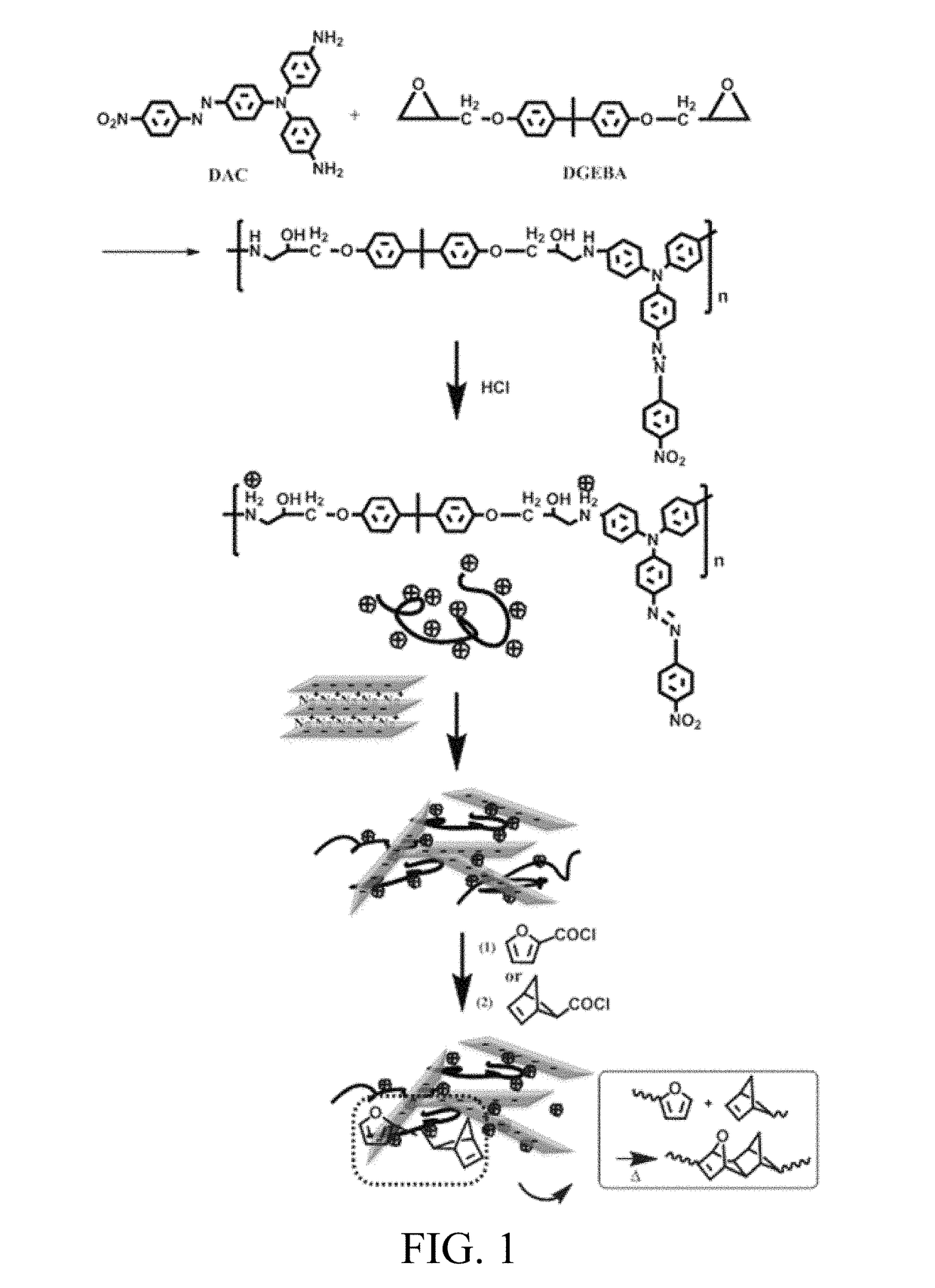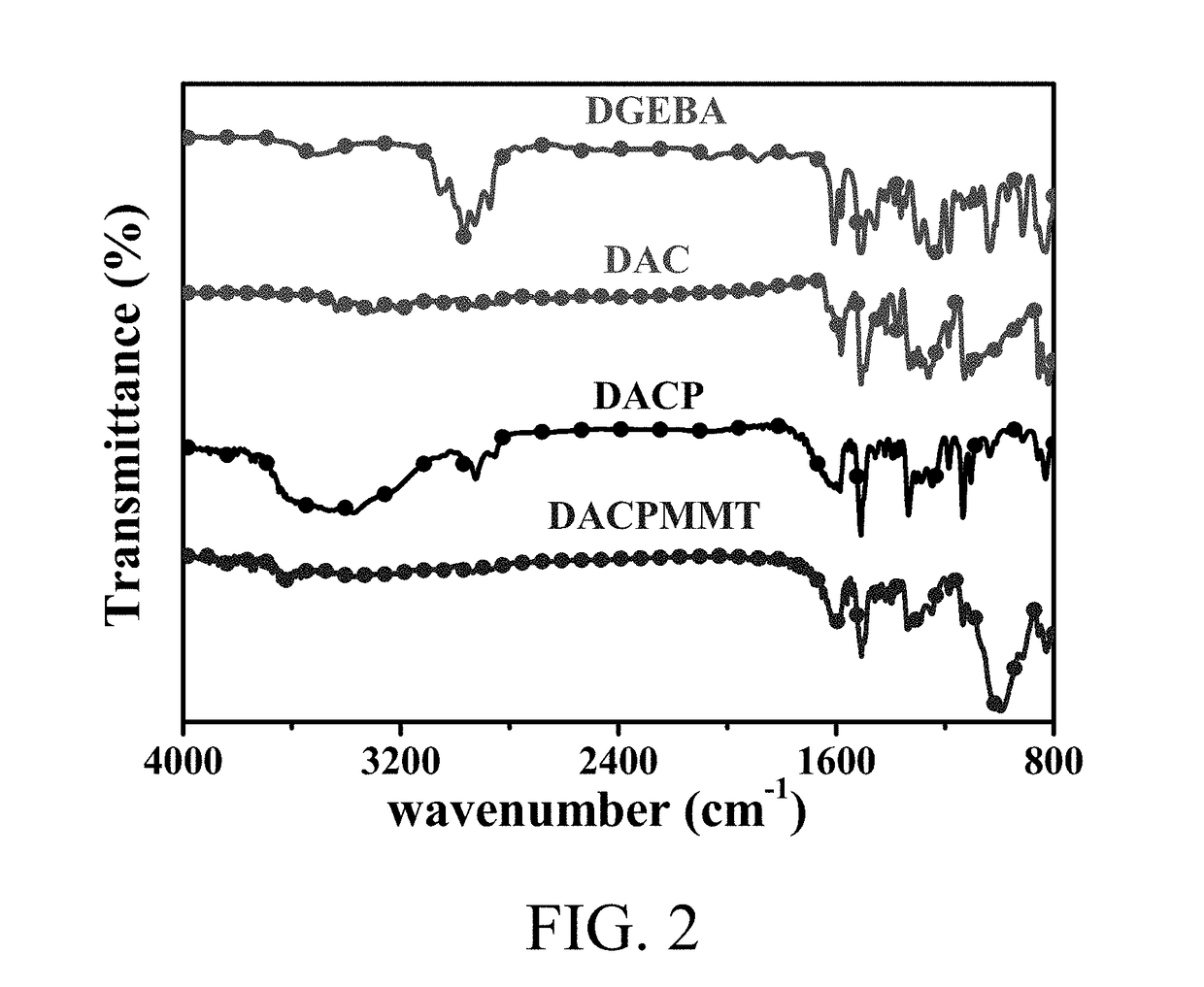Epoxy resin oligomer with second order nonlinear optical properties, chromophores, and method of manufacturing the oligomer-containing crosslink layered epoxy/mmt composite material with second order nonlinear optical properties
a technology of nonlinear optical properties and epoxy resin, which is applied in the field of epoxy resin oligomers chromophores, a method of manufacturing the oligomer-containing crosslink layered epoxy/mmt composite material with second order nonlinear optical properties, can solve the problems of limited application and inability to completely dissolve in conventional organic solvents, and achieve the effect of improving thermal stability
- Summary
- Abstract
- Description
- Claims
- Application Information
AI Technical Summary
Benefits of technology
Problems solved by technology
Method used
Image
Examples
embodiment 1
[0024]Step (a): synthesis of epoxy resin oligomer with second order nonlinear optical properties dissolving 1.22 g (8 mmole) of p-nitrosonitrobenzene and 4.07 g (14 mmole) of 4,4′,4″-triamino-phenylamine in an appropriate amount of acetic acid, instilling p-nitrosonitrobenzene solution slowly into 4,4′,4″-triaminophenylamine solution, blending them so that they react for 12 hours, neutralizing it with acetic acid sodium saturated solution to pH 6 such that purple solid precipitate is produced, performing solid-liquid separation by suction filtration, and rinsing the filter disk with a large amount of deionized water in several instances to obtain a purple solid mixture, wherein the collected solid mixture is purified by column chromatography to extract a product therefrom, wherein an eluent of n-hexane:ethyl acetate is of a ratio 1:3, so as to produce DAC, which is a bright green solid, and the aforesaid chemical reaction is expressed by the structural formulas as follows:
mixing 2 g...
embodiment 2
[0027]Step (a): synthesis of epoxy resin oligomer with second order nonlinear optical properties mixing C12H10N4O2 (Disperse Orange 3, DO3) (1.33 g, 5.5 mmole), NaNO2 (0.38g, 5.5 mmole) and 10 ml of water, placing the mixture in a 50 ml flask immersed in an ice bath, introducing 1.5 ml of concentrated hydrochloric acid (37%) and 20 ml of ice water into the mixture solution to react for 30 minutes in the ice bath so as to produce a diazonium salt mixture solution, dissolving 1,3-phenylenediamine (0.60 g, 5.5 mmole) in 20 ml of distilled water and 3 ml of concentrated hydrochloric acid (37%) and placing the solution in another 50 ml flask, adding the diazonium salt solution into the flask slowly and blending the solution therein for 1 hour approximately to finalize the chemical reaction. A sodium hydroxide aqueous solution is prepared and used to neutralize the aforesaid solution such that a dark brown solid precipitate is formed. Afterward, solid-liquid separation is performed by fil...
PUM
| Property | Measurement | Unit |
|---|---|---|
| Temperature | aaaaa | aaaaa |
| Time | aaaaa | aaaaa |
| Stability | aaaaa | aaaaa |
Abstract
Description
Claims
Application Information
 Login to View More
Login to View More - R&D
- Intellectual Property
- Life Sciences
- Materials
- Tech Scout
- Unparalleled Data Quality
- Higher Quality Content
- 60% Fewer Hallucinations
Browse by: Latest US Patents, China's latest patents, Technical Efficacy Thesaurus, Application Domain, Technology Topic, Popular Technical Reports.
© 2025 PatSnap. All rights reserved.Legal|Privacy policy|Modern Slavery Act Transparency Statement|Sitemap|About US| Contact US: help@patsnap.com



